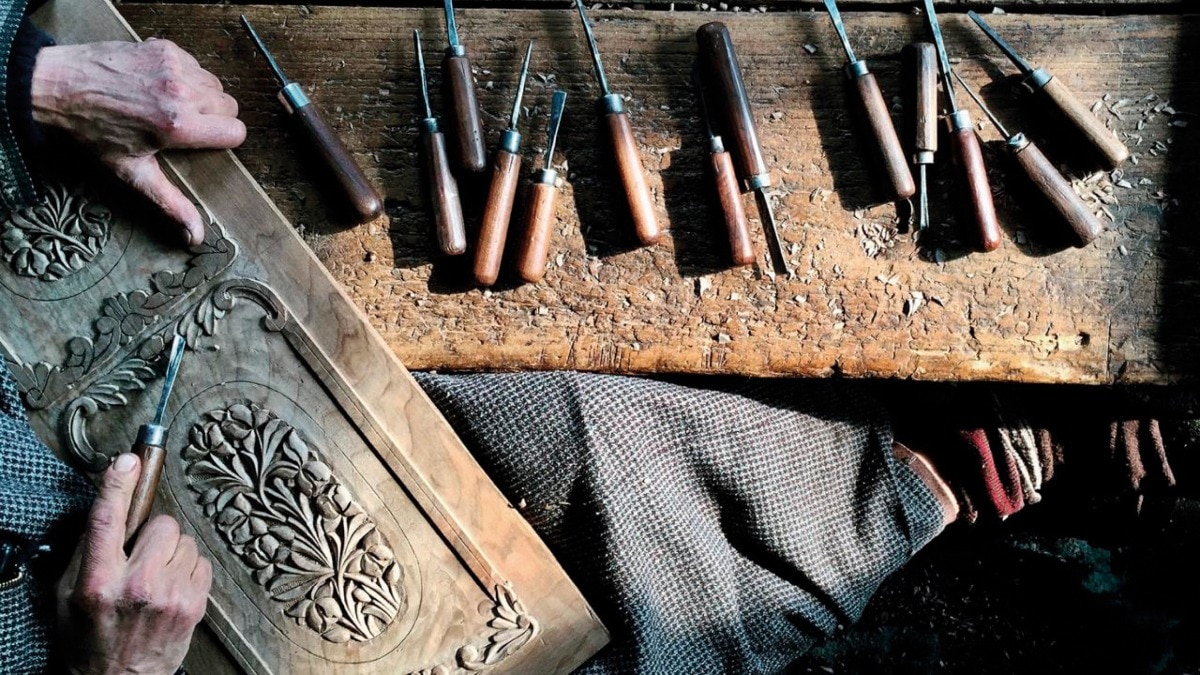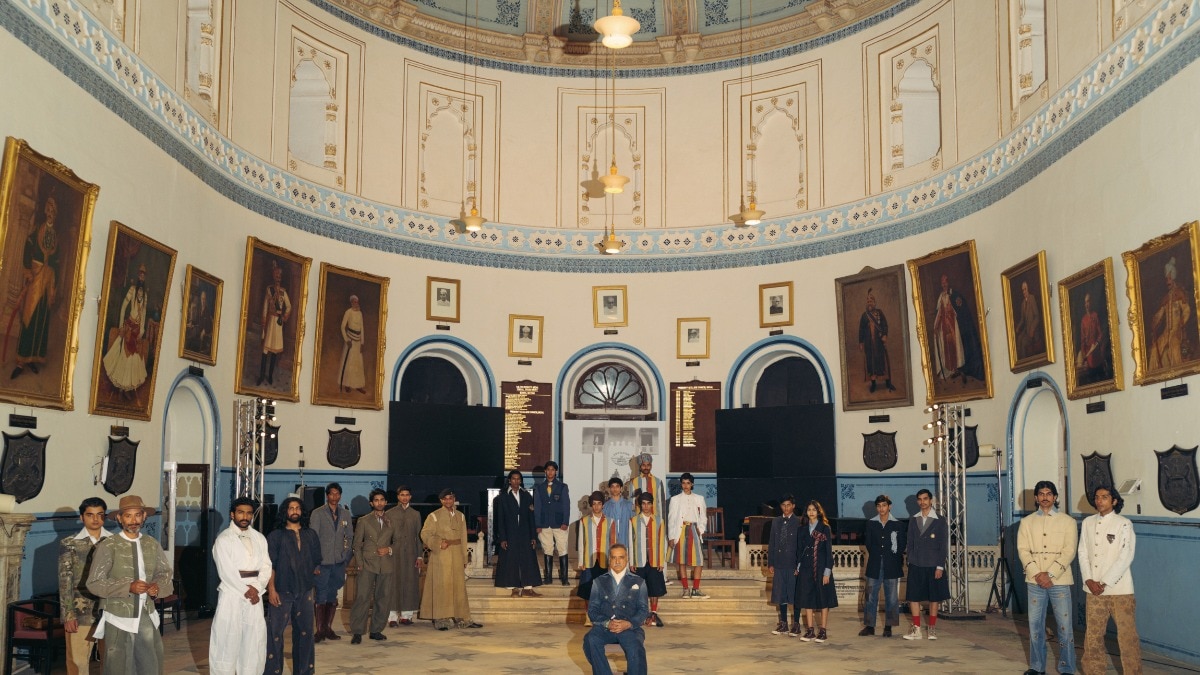
With AI growing ever more advanced, will truly original thinking become harder to replicate
Frances Hedges talks about the rising concerns over its potential to displace the human workforce.


‘It’s a blood and guts business, here at my desk, that requires something of me to initiate the new and fresh idea. It requires my humanness.’ So said Nick Cave in a spirited defence of creativity issued in response to a fan using the language-processing tool ChatGPT to generate lyrics written in his style. ‘I understand that ChatGPT is in its infancy,’ he conceded, ‘but perhaps that is the emerging horror of AI—that it will forever be in its infancy, as it will always have further to go, and the direction is always forward, always faster.’
His prediction was correct: the pace of change has only continued to increase. Between April and June this year, ChatGPT reached a record-breaking 100 million users, making it one of the most rapid-growth technologies in recent history. And in May, the online-education platform Chegg, which provides ‘homework help’ services, suffered a drop in share price of almost 50 per cent after it saw a wave of students abandon it in favour of ChatGPT or one of its competitors, such as Google Bard or Meta’s Llama 2. Still, the ability to plagiarise with ease is one thing; devising genuinely original material is quite another—and the jury is still out on whether large-language models can produce anything worthy of what Cave calls ‘the authentic creative struggle that precedes the invention of a unique lyric of actual value’.

Anxiety about the prospect of machines learning from—and eventually outwitting—humans has always been rife in our culture, but only relatively recently have we started paying serious attention to technology that could threaten what we might think of as our proudest endeavours. Ai-Da, the world’s first artist-robot, has presented us with ultra-realistic drawings and paintings; YouTube’s nascent AI-music channel now supplies us with automated tunes; and Midjourney has been adopted by video-game developers for its ability to turn out images and characters at speed. When Nike collaborated with Tiffany & Co to create a new pair of its Air Force 1 trainers in March, fans of the brand who were disappointed by the results turned to AI to demonstrate their claim that a machine could have come up with a better design. So is creativity a dying art?
‘I don’t think it’s as simple as asking machines for the answers,’ says Franki Goodwin, the chief creative officer at Saatchi & Saatchi, who nonetheless encourages her team to experiment with AI. ‘I find it helpful to talk about “assisted” rather than “artificial” intelligence, because that’s how it ought to be perceived—if someone puts something quite ordinary in front of you, it’s still a useful jumping-off point.’ Earlier this year, one of the company’s most promising young strategists, Ewan Patel, co-launched the beta version of an AI tool called Briefly that supposedly fast-tracks the process of writing a creative brief; for Goodwin, such developments are positive but not a cause for alarm.
‘It’s not as if a planner would ever present me with a brief and I’d say, thanks very much, I’ll take that,’ she points out. ‘I’d always challenge it and use it as the impetus to go beyond the obvious.’ Where she does see a value is in automating onerous tasks such as the manual creation of advertising storyboards, freeing up employees to spend their time on creative brainstorming.
For business owners, knowing how to deploy such a fast-evolving technology in the right way and for the right reasons is a daunting prospect—not least because potentially contentious uses of AI-generated text and imagery have already triggered a slew of complex lawsuits. (Even the current SAG-AFTRA strikes in Hollywood relate to this, with actors demanding greater control of—and compensation for—the usage of their digital likenesses). Kathryn Parsons, the entrepreneur behind the technology-education company Decoded, is currently working with companies across multiple sectors, from Citi and HSBC to Kering and Christie’s, to help them navigate some of these pitfalls and use AI to their best advantage. ‘There’s a common feeling among leaders that someone else knows more than they do—but in fact, very few businesses have so far found a good use for many of the tools,’ she says. ‘The smartest companies-those where the leadership is trusted—are allowing their teams to learn about the technology and play with it, while reassuring people that their jobs are safe.’ At the insurance brand Aviva, she has been collaborating with management on a programme that aims to upskill tens of thousands of employees, giving them the potential to occupy future positions that might otherwise need to be hired in from outside. ‘It means that even if AI does replace some parts of their existing jobs, there’s the chance to co-create new roles for these individuals.’

It’s worth noting that, for all the media’s fear-mongering claims that our jobs are on the verge of being lost to robots, the speed at which automation is being introduced into most companies’ operations is still far lower than expected. According to the 2023 World Economic Forum’s Future of Jobs Report, organisations today estimate that 34 per cent of all business-related tasks are performed by machines, with the remaining 66 per cent carried out by humans—a negligible one per cent increase on the figures cited in the 2020 edition of the same report.
Meanwhile, respondents had actually revised down their prediction for the proportion of tasks likely to be automated within the next five years—from 47 to 42 per cent—since the last survey. For the transformation coach Jo Glynn Smith, who writes a monthly career-advice column for Bazaar’s website, the key is not to bury your head in the sand when it comes to thinking about the impact of technology on your role or sector. ‘It’s always best to move towards the change, rather than pretend it isn’t happening,’ she says. ‘Take the time to learn about the various new tools and how you might integrate them into what you already do.’ She also recommends reflecting on your key strengths, noting that skills such as critical thinking and emotional intelligence–both very difficult for a machine to emulate—are rising up the priority list for recruiters. ‘Those human nuances, like whether you’re a good team player or how you approach problem-solving, will matter more and more.’ A willingness to ask questions and an interest in finding out more about an issue are, she adds, essential requirements for any good leader. ‘Fear is about the unknown—so wherever you see fear, bring curiosity instead. The worst that can happen is that it leads to an interesting dinner-party conversation.’ Challenge accepted.
This piece originally appeared in the November 2023 print edition of Harper's Bazaar UK










